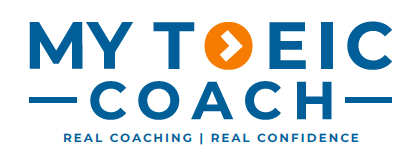📱 How to Choose and Use TOEIC Listening Apps Correctly
🤔 The Problem with Listening Apps
There are thousands of English listening apps.
Podcasts. Shadowing apps. Streaming clips. YouTube playlists.
So you download one — or five — and hit play.
Then what?
You listen while walking.
You listen while cleaning.
You listen while half-asleep in bed.
And after weeks of effort, your score hasn’t changed.
Your brain isn’t catching anything new.
And worse — you’re getting tired of it all.
Here’s why:
Most people don’t use listening apps wrong.
They just use them passively.
Apps are not the problem.
Your relationship to the app is.
This article will show you how to flip that relationship —
and use apps to build real, measurable skill.
🎧 ALT Principle: Tools Don’t Transform You — Habits Do
A good app can support your training.
But only if you use it to practice output, not just absorb input.
ALT strategies focus on what your brain is doing — not just what’s playing in your ears.
Let’s look at two techniques that turn apps from “background noise” into actual growth engines.
🧠 ALT Strategy (Beginner–Intermediate): “Pause-and-Predict” Mode
This works with almost any audio app — even a simple podcast player.
✅ What to do:
Choose a short dialogue (like Part 3 TOEIC practice, or a natural English conversation app)
After every 1–2 sentences, pause the audio
Ask yourself:
What do I think the next line will be?
What tone or emotion will come next?
What’s the logic of the conversation so far?
Press play. Was your prediction right?
If not — why was it wrong?
Did you misunderstand the situation?
Did you miss a cue?
Did you assume too much?
✅ Why it works:
Builds anticipation — a key to real-time listening
Trains logical flow, not word-for-word decoding
Increases mental alertness and emotional engagement
🔼 How to level up:
Use speed controls (1.2x / 1.4x) to simulate test pace
Skip the questions — focus only on flow prediction
Try with unfamiliar accents (Indian, British, etc.)
🔍 ALT Strategy (Advanced): “Transcript-free Breakdown Loops”
This flips the typical “read the script” routine.
Instead of reading after listening, you reverse the process — and train sound recognition from zero.
✅ What to do:
Choose a short segment (10–15 seconds) from an audio app with loop and speed control features (e.g., AudioStretch, SmartPlayer, Music Speed Changer)
Don’t look at the transcript yet.
Listen to the same segment on loop 3–5 times
Try to:
Write down what you hear
Speak it out loud
Identify sound groups, contractions, stress
Only after that, check the transcript.
Compare: What did you miss? Where did your brain invent sounds?
✅ Why it works:
Strengthens bottom-up decoding
Improves tolerance for unclear or fast speech
Builds deep focus — not lazy repetition
🔼 How to level up:
Use longer clips (30+ seconds)
Delay checking the transcript until the next day
Test yourself weekly on your transcription accuracy
⚠️ Bonus Tip: Don’t Multitask
If you’re using an app while walking, driving, cooking, cleaning — that’s fine.
It helps with exposure.
But don’t confuse that with training.
Exposure creates comfort. Training creates ability.
Passive listening has its place.
But the TOEIC test doesn’t measure how much English you’ve heard.
It measures how well you respond to it in real time.
💬 Final Thought
The best TOEIC Listening app is the one you actually use —
actively, intentionally, repeatedly.
If you treat your app like a gym:
Warm up
Isolate a skill
Train with repetition
Cool down and reflect
…then it will work for you.
If you just press play and hope for improvement?
Well — you already know how that story ends.
So the next time you open your favourite app, ask:
Am I training right now? Or just passing time?
ALT helps you close that gap — and use every minute for real progress.
Want to Learn More?
Our blog is full of practical strategies that help test-takers like you build better habits, overcome common blocks, and improve TOEIC scores through smarter, easier methods. Try our free TOEIC Block quiz now!
